Model Context Protocol (MCP) finally gives AI models a way to access the business data needed to make them really useful at work. CData MCP Servers have the depth and performance to make sure AI has access to all of the answers.
Try them now for free →Analyze Azure Data Lake Storage Data in Infragistics Reveal
Use the CData API Server to create an OData API on top of Azure Data Lake Storage data and visualize live Azure Data Lake Storage data in Ingragistics Reveal.
Reveal is a data visualization solution provided by Infragistics and can be paired with the CData API Server and Azure Data Lake Storage ADO.NET Provider to build dynamic dashboards from live Azure Data Lake Storage data. The CData API Server generates an OData API for Azure Data Lake Storage, which is natively consumable in Reveal. In this article, we walk through connecting to Azure Data Lake Storage in API Server and connecting to the API Server from Infragistics Reveal to create a simple dashboard.
Connect to Azure Data Lake Storage from API Server
CData API Server uses a straightforward, point-and-click interface to connect to data sources and generate APIs.
- Open API Server and click Settings -> Connection -> Add Connection
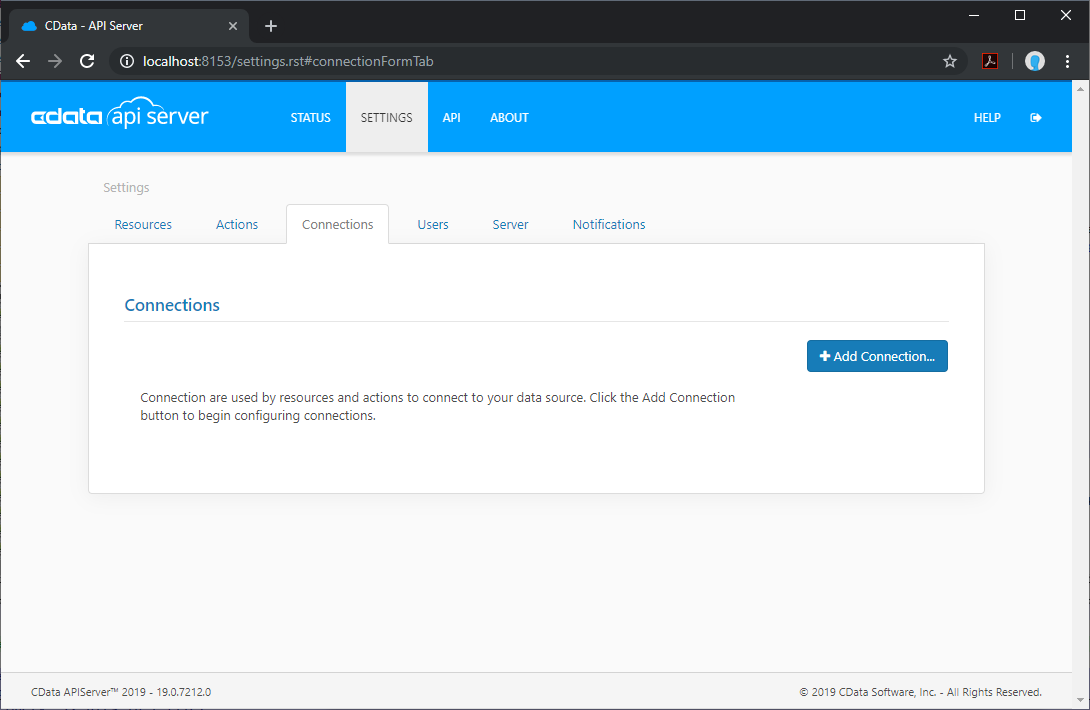
- Select "Azure Data Lake Storage"
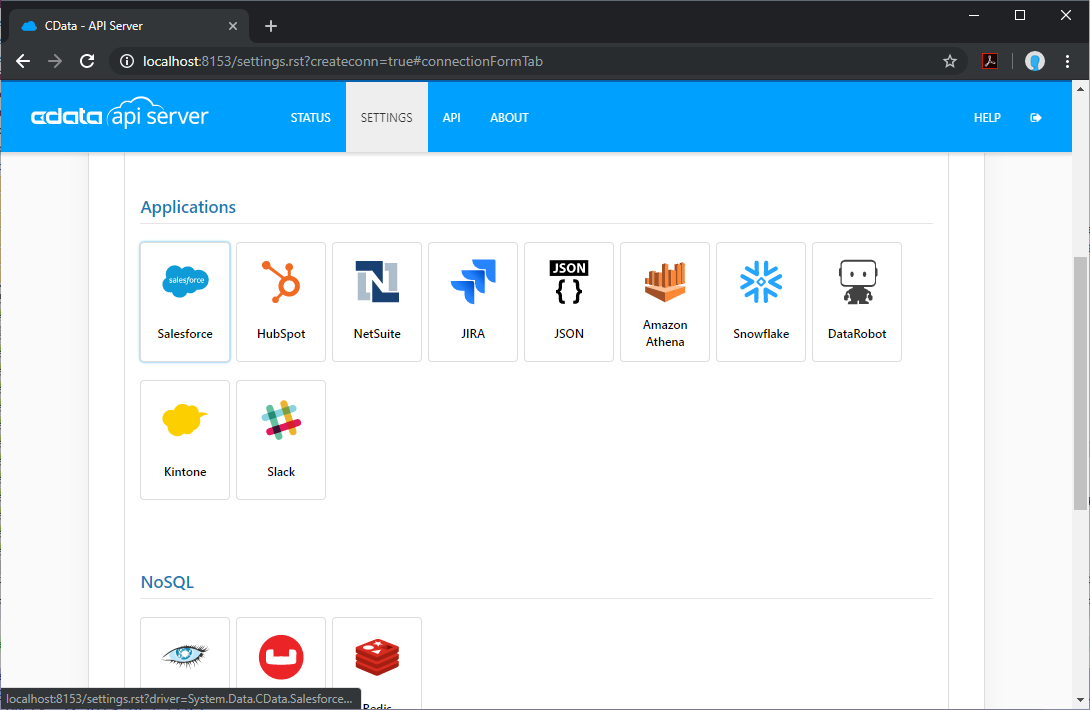
- Enter the necessary authentication properties to connect to Azure Data Lake Storage.
Authenticating to a Gen 1 DataLakeStore Account
Gen 1 uses OAuth 2.0 in Azure AD for authentication.
For this, an Active Directory web application is required. You can create one as follows:
To authenticate against a Gen 1 DataLakeStore account, the following properties are required:
- Schema: Set this to ADLSGen1.
- Account: Set this to the name of the account.
- OAuthClientId: Set this to the application Id of the app you created.
- OAuthClientSecret: Set this to the key generated for the app you created.
- TenantId: Set this to the tenant Id. See the property for more information on how to acquire this.
- Directory: Set this to the path which will be used to store the replicated file. If not specified, the root directory will be used.
Authenticating to a Gen 2 DataLakeStore Account
To authenticate against a Gen 2 DataLakeStore account, the following properties are required:
- Schema: Set this to ADLSGen2.
- Account: Set this to the name of the account.
- FileSystem: Set this to the file system which will be used for this account.
- AccessKey: Set this to the access key which will be used to authenticate the calls to the API. See the property for more information on how to acquire this.
- Directory: Set this to the path which will be used to store the replicated file. If not specified, the root directory will be used.
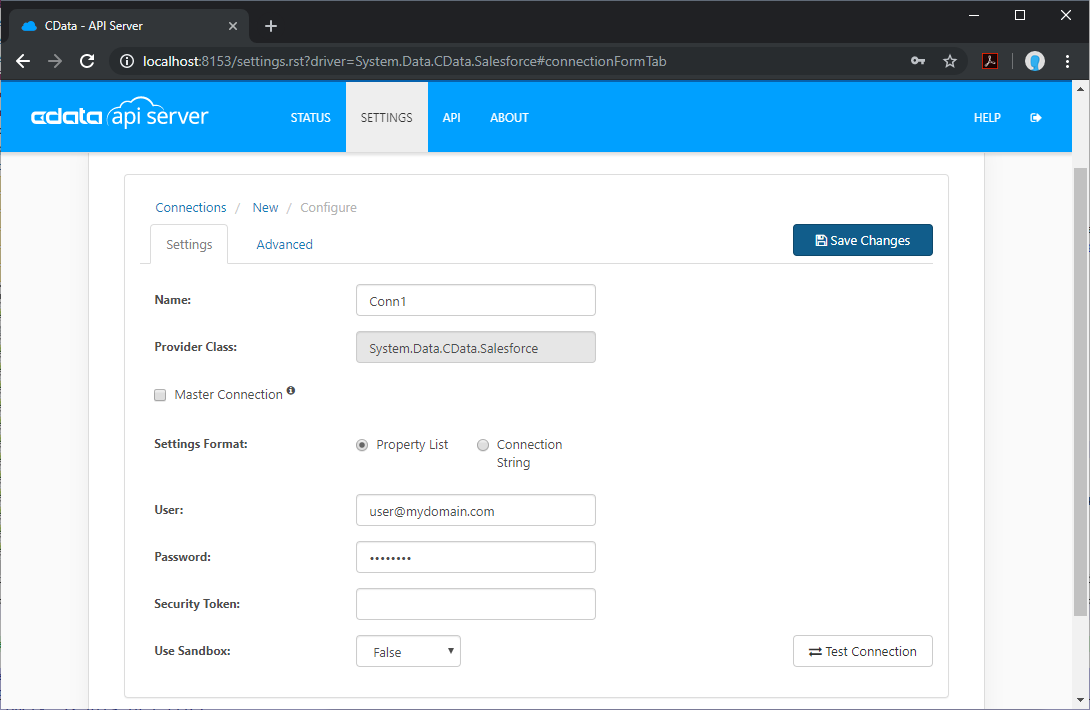
Add Azure Data Lake Storage Resource Definitions in API Server
After connecting to Azure Data Lake Storage, create Resources, which represent API endpoints for Azure Data Lake Storage data.
- Click Settings -> Resources -> Add Resource

- Select the Azure Data Lake Storage connection
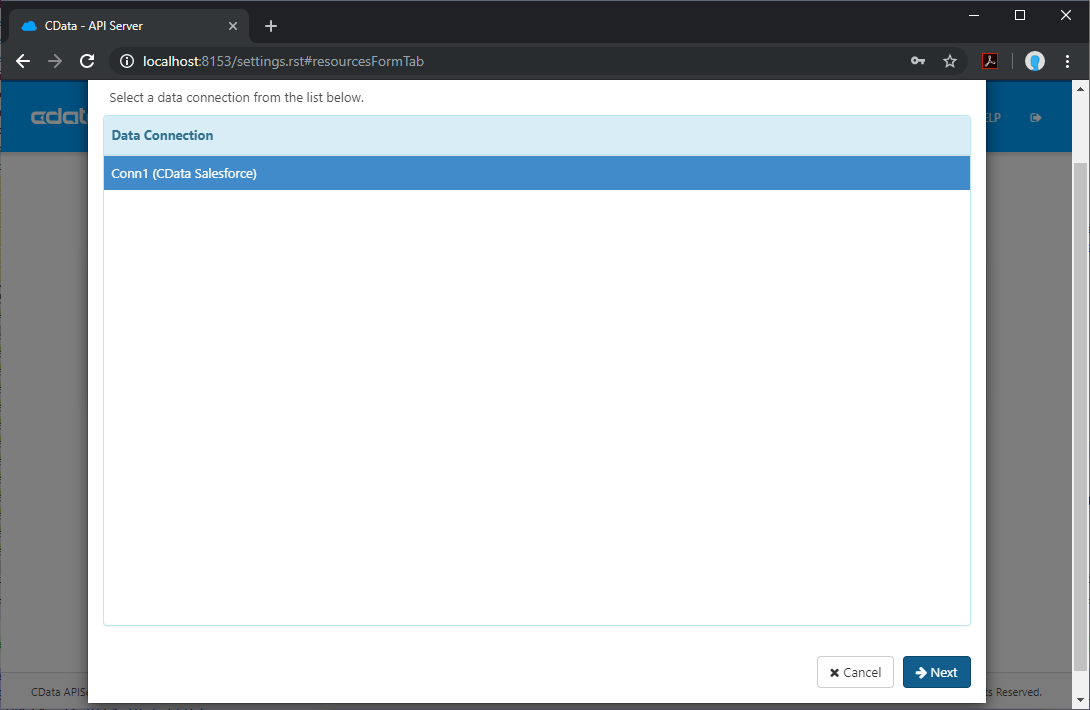
- Select the table you wish to retrieve and click Next
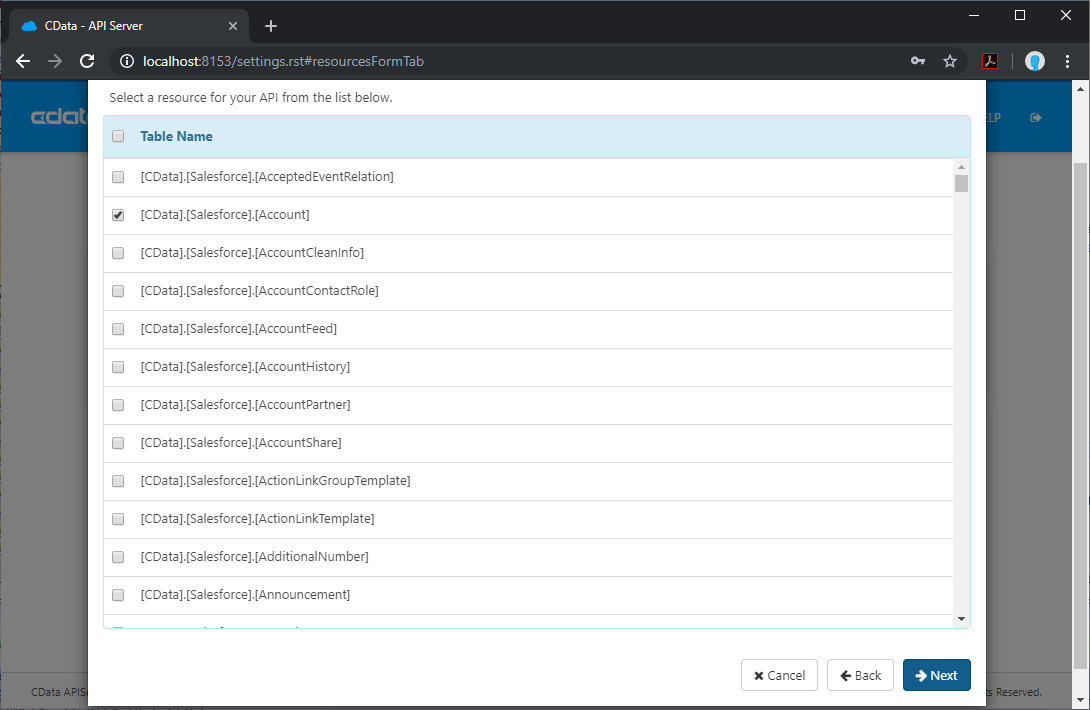
- (Optional) Edit the resource to select specific fields and more
- Save the settings
Add an API Server User
Create a User to connect to Azure Data Lake Storage from Reveal through API Server.
- Click Settings -> Users
- Click Add
- Configure a User with access to the Azure Data Lake Storage Connection and Resource(s)
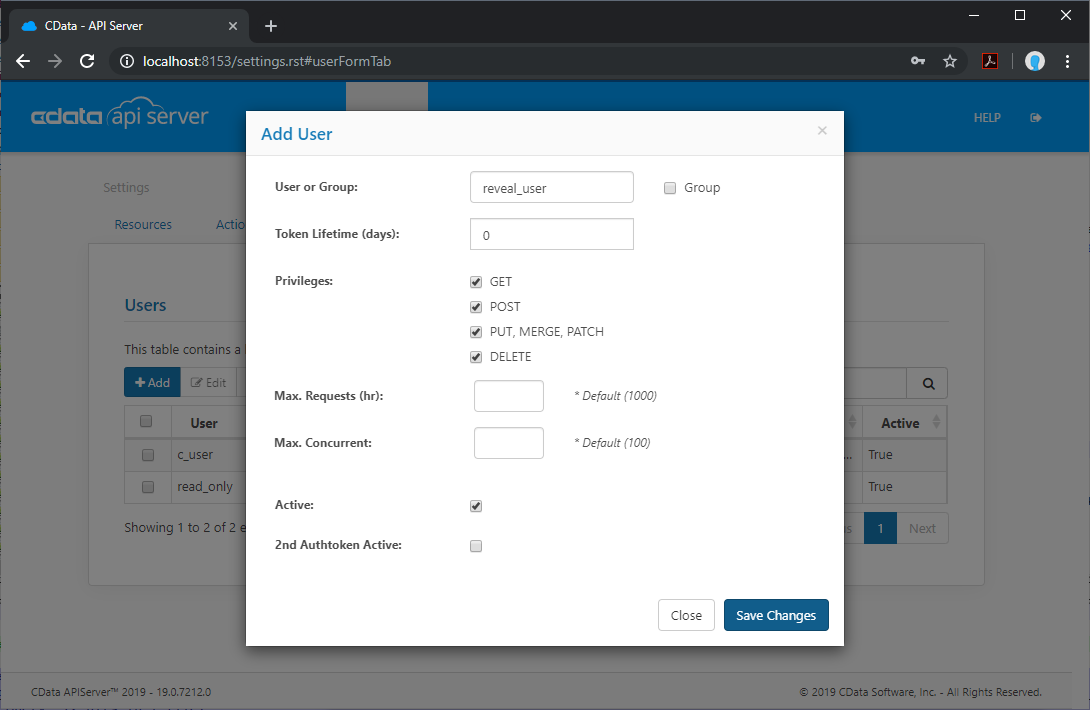
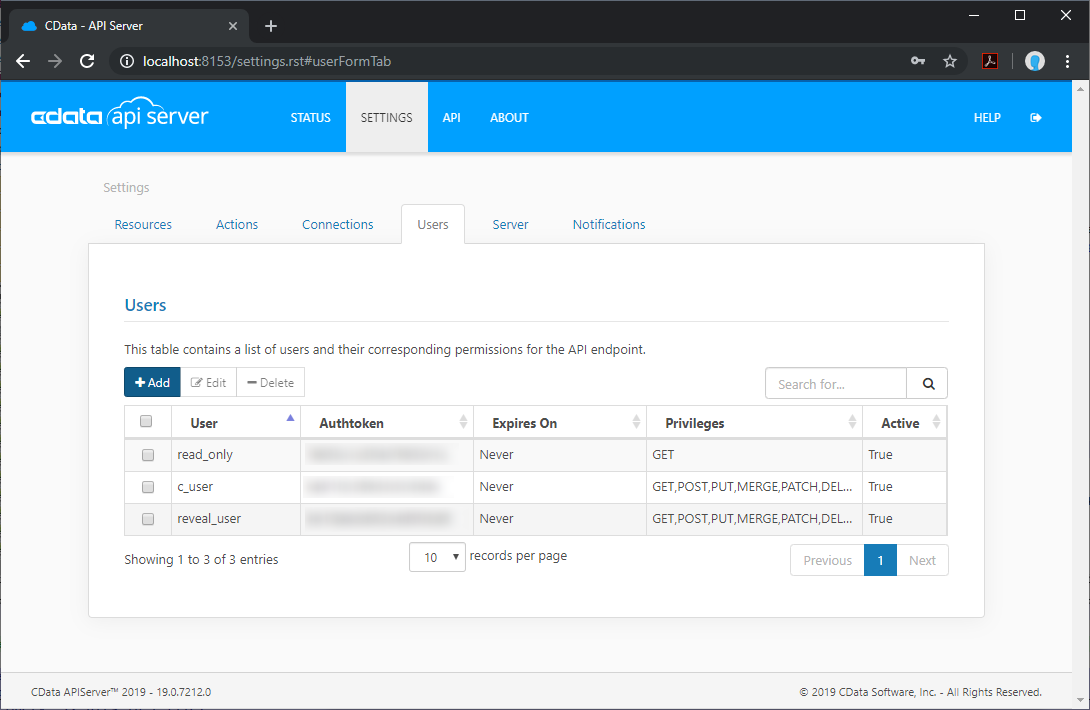
(Optional) Configure Cross-Origin Resource Sharing (CORS)
When accessing and connecting to multiple different domains from an application such as Ajax, there is a possibility of violating the limitations of cross-site scripting. In that case, configure the CORS settings in Settings -> Server.
- Enable cross-origin resource sharing (CORS): ON
- Allow all domains without '*': ON
- Access-Control-Allow-Methods: GET, PUT, POST, OPTIONS
- Access-Control-Allow-Headers: Authorization
Save the changes to the settings.
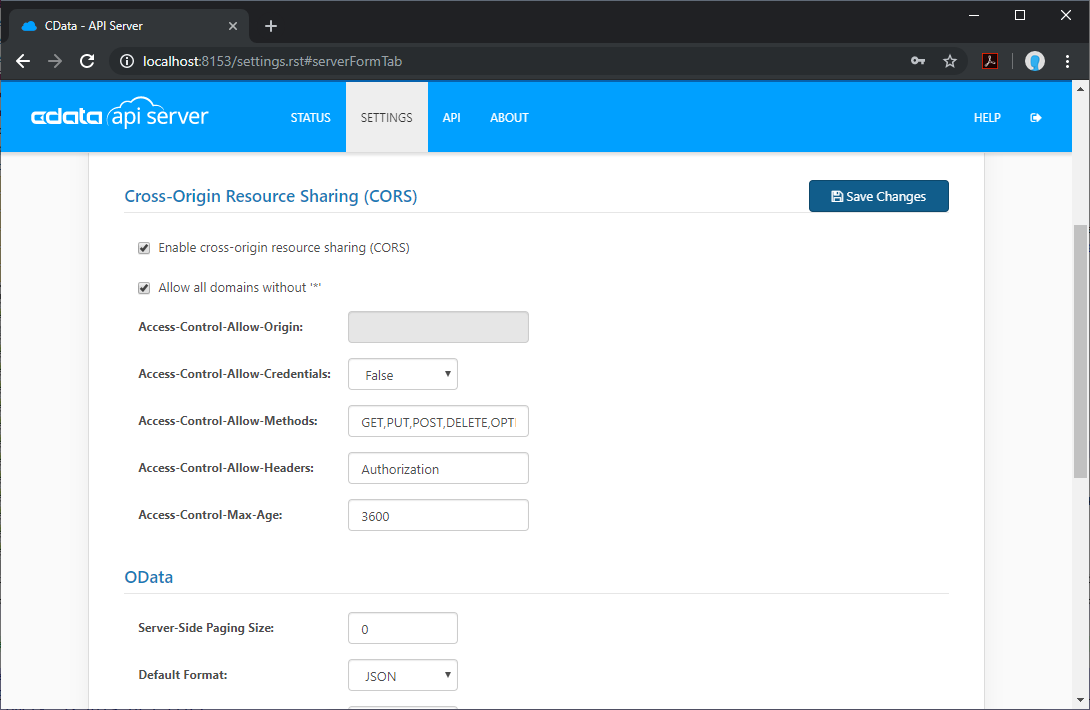
Create a Dashboard in Reveal
With the API Server configured, we can visualize Azure Data Lake Storage data in Reveal.
- Log into Reveal and click Dashboards -> New
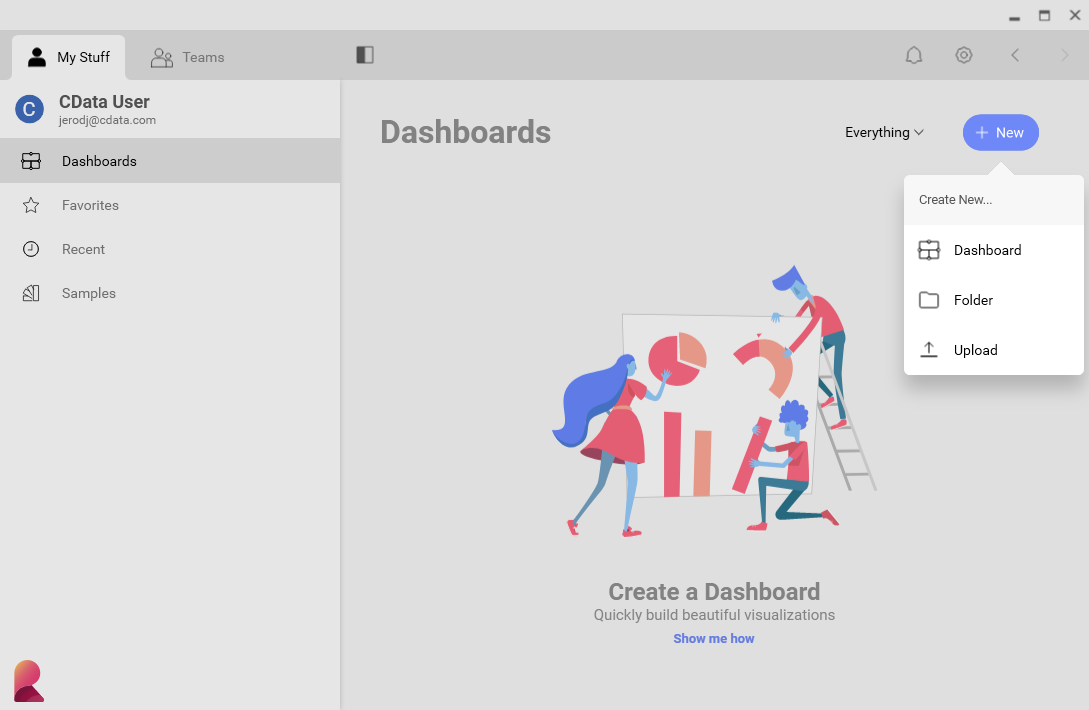
- Click Data Source -> OData Feed

- Specify the API Server API endpoint URL, for example: https://serverurl/api.rsc
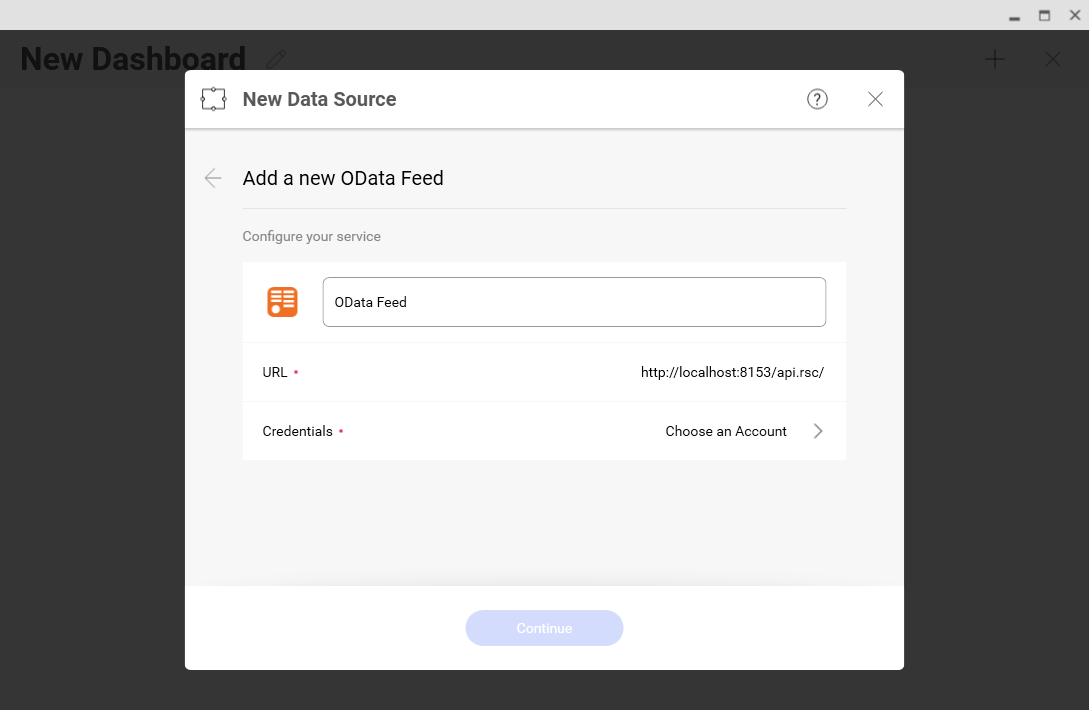
- Select Generic Credentials and specify the API Server username and authentication token
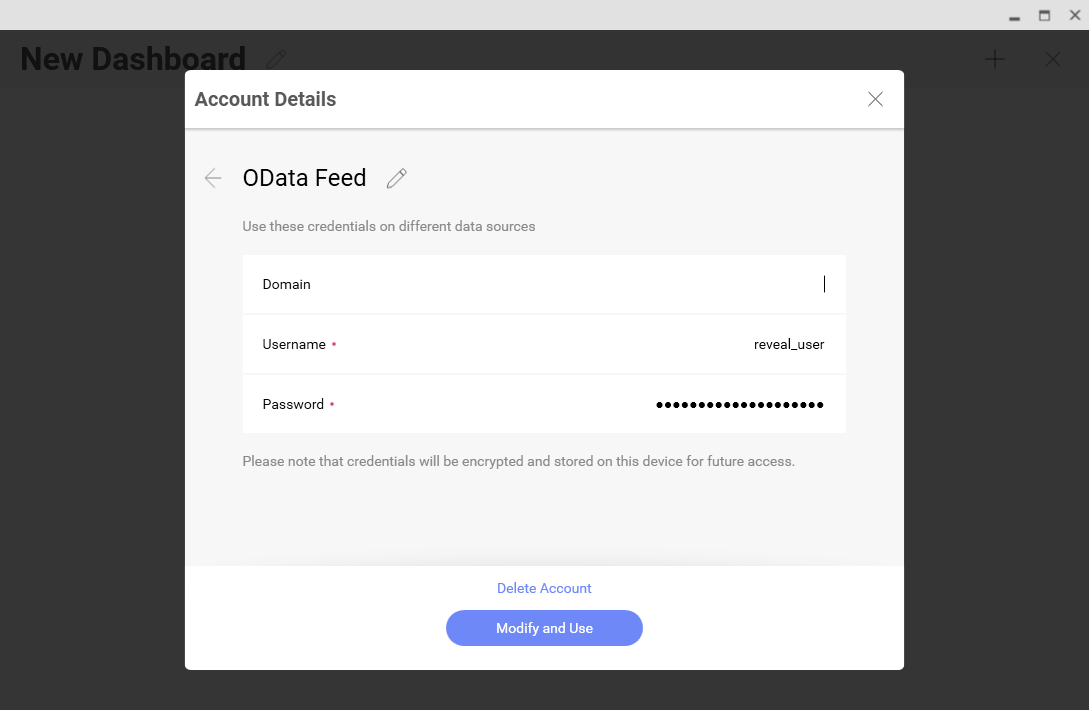
- Select the entity you wish to visualize
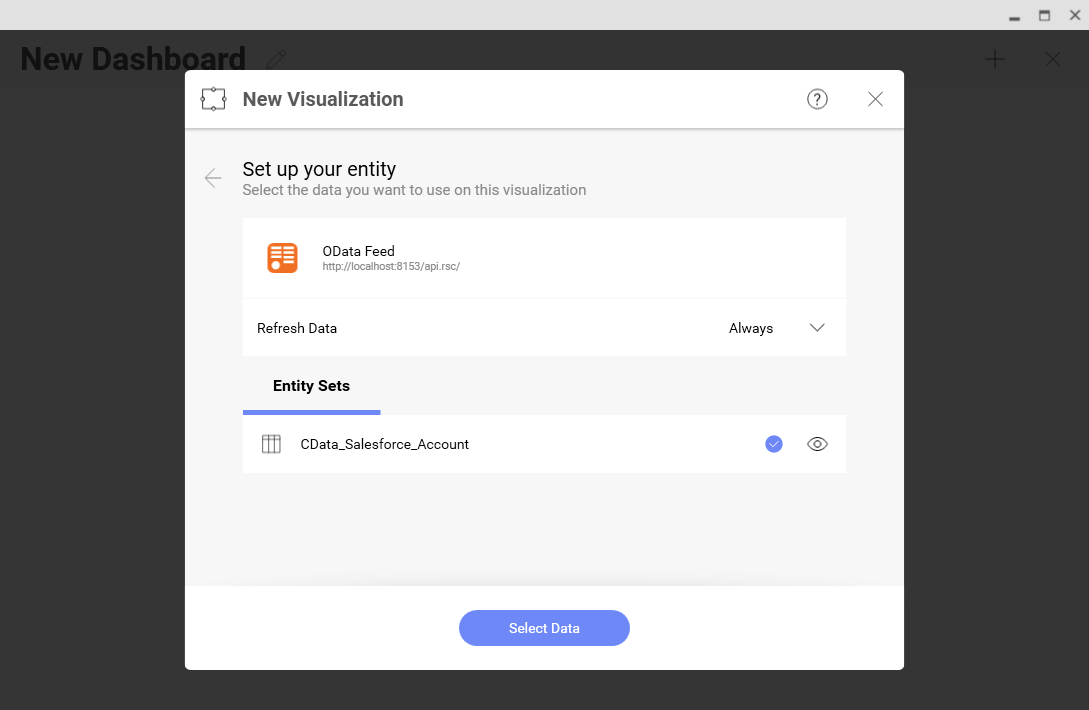
- Select fields and choose a chart type

More Information & Free Trial
At this point, you have created a simple dashboard from live Azure Data Lake Storage data. For more information on creating OData feeds from Azure Data Lake Storage (and more than 150 other sources), visit the API Server page. Download a free, 30-day trial and start working live Azure Data Lake Storage data in tools that consume OData APIs.
